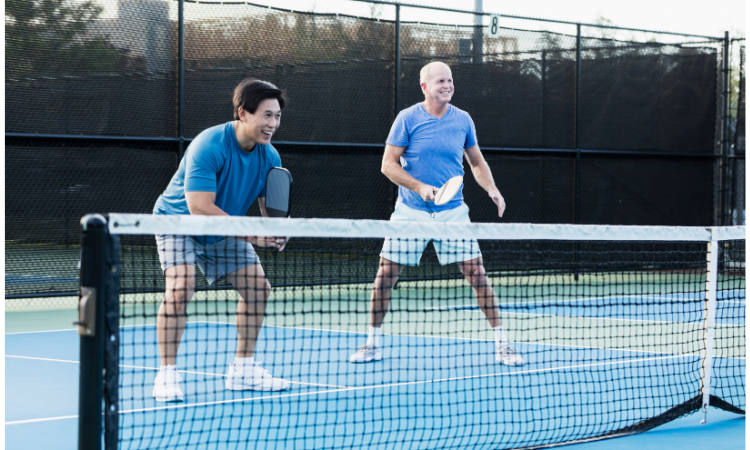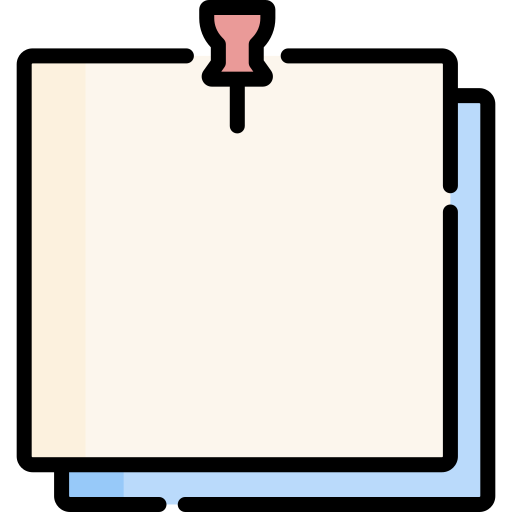
Do you know the meaning of low balls in pickleball? And how can you use this knowledge to skyrocket your pickleball game?
If you’re familiar with the various pickleball hitting techniques, you know that there are ways to manipulate the ball to create different bounces for your opponents to adjust to. For example, you can hit volley slices, forehand topspin groundstrokes, and drop shot dinks that all bounce differently on your opponent’s side of the court.
If you’re looking to add more depth to your pickleball shots so you can break into the next skill level, you should try hitting low balls.
What is the Low Balls Meaning in Pickleball?
A low ball refers to a shot that travels a few inches over the net and stays low to the ground after it bounces on the opposite side of the net. Hence a “low” ball.

Hitting a low ball requires precise control and placement. You don’t have a huge margin for error because you’re trying to hit the ball as close to the top of the net as possible, so it’s important to drill this shot until you feel confident you can hit it under pressure.
You can hit low balls with a variety of shots, including dinks, drives, and even smashes, depending on your skill level.
Why are Hitting Low Balls Advantageous?
After you’ve mastered the basics of third shot drops and drives, dinks and volleys, the next step is creating different spins and speeds to throw off your opponent’s rhythm. Beyond that, there are numerous other reasons why you should add low balls to your pickleball game.
1. Sure-fire Way to Hit an Unattackable Ball.
When you rally at the kitchen line, you and your partner are trying to manipulate the ball to force an unforced or forced error. However, another strategy to employ is to hit shots that force your opponent to send over a high ball for you to attack. This is a common strategy, and one that your opponents are also looking to execute.
So, if you can keep the ball low over the net and bounce it low on the opposite side of the net, then it will be tough for your opponents to attack. In fact, impatient players often attack off of these shots and miss them because it’s a high-risk play.
2. Give Your Opponents a Different Look.
Your opponents can get into a rhythm when you consistently hit the same shot with the same spin at the same speed. Mixing in backspin can throw off their rhythm and force them to hit an error.
3. Tire out Your Opponents.
Ever practiced hitting against low ball slice shots from a ball machine? It’s tough work. When you hit low ball after low ball, your opponents have to keep bending their knees more often to retrieve the ball, making it one heck of a leg workout.
What Is the Proper Technique for Hitting Low Balls?
The technique of hitting low balls is based on two factors: trajectory and speed. The ball’s trajectory should travel horizontally, unlike topspin shots that create more of an arch. And you should hit the ball at a moderate to fast speed so the ball can skid across your opponent’s surface upon the bounce.
Ready to add a new skill to your pickleball game? Follow these expert tips on how to hit low balls.
1. Stay Low in Ready Position.

For any shot you hit in pickleball, you want to be in an athletic position before you make contact with the ball because it grounds your body, keeps you balanced, and allows you to withstand fast-paced shots.
When it comes to hitting low balls, try bending your knees a little more during the ready position. This will help you get under the ball and stay low during contact. The closer the ball trajectory is to the top of the net, the lower your body needs to be.
2. Use a Continental Grip.
A continental grip is a commonly used grip in pickleball. To find the continental grip, place your right hand (or left hand if you’re a lefty) on the handle so that the knuckle of your index finger is on the slanted edge of the paddle.
When you hold the paddle with a continental grip, you’ll notice the paddle’s face is slanted slightly upward. With the paddle face in this position, it’ll be easier to cut underneath the ball to create backspin. Backspin is what makes the ball cut through the court upon the bounce.
3. Turn Your Shoulders and Load Your Weight on Your Back Foot.
When your goal is to hit a low ball, whether that’s a dink or a groundstroke, you’re essentially slicing the ball or creating backspin. So, when the ball lands on your opponent’s side of the court, the ball stays low.
The best way to hit a moderate to fast speed on your slice is to turn your shoulders (a slight turn is all you need), load on your back foot, and transfer your weight as you make contact with the ball.

4. Follow Through Back to Ready Position.
The follow-through ensures control and maximum backspin on the ball. The longer you can hold or carry the ball on your paddle, the more effective your low ball hit will be.
If you stop your stroke mid-swing, you lose control of your shot. When people forget to follow through, they usually pop up to see where the ball lands, and therefore, the ball can pop up, creating a high ball for your opponents to attack.
When you add a complete follow-through to your low ball shot, you maximize your time and can be ready for the next shot quicker. It’s a win-win!
When to Hit Low Balls During Gameplay
One of the best ways to level up your pickleball game is to diversify your shots. Now that you’ve got a basic understanding of how to hit low balls, the next step is to drill and implement your new skill into your game. Here are a few scenarios to keep in mind to know when to use the low ball to your advantage.
1. When Your Opponent(s) Is at the Baseline.
Whether you’re playing singles or doubles, if your opponent is at the baseline and you’re at the net, one way to land a solid shot is to softly hit your slice volley or dink in your opponent’s kitchen.
When you combine a soft touch with backspin, the ball stays low to the surface, making it tough for your opponents to sprint from the baseline to retrieve it, let alone control it back without popping it up for you to attack.
2. During a Cross-court to Cross-court Backhand Exchange.
Most players have a weak backhand side, so targeting your opponent’s backhand with a slice dink or volley low ball is advantageous because the change in speed and spin makes it tough to control.
Plus, hitting cross court is a lower risk shot because the ball crosses over the low part of the net (the middle part), and you have more court to hit into as opposed to if you were to hit down-the-line.
3. On Return of Serves.
Hitting a low, deep ball with backspin off of your opponent’s serve is a great way to test how good your opponent’s third shot drops are. Because the slice stays low to the surface, your opponent has to lift the ball up to clear the net on their drop. This creates a high level of difficulty.
Let’s Recap
A low ball meaning in pickleball is when you hit the ball with backspin so that it crosses the net with a small margin, and skids low on the surface off of the bounce.
You can hit low balls on a variety of shots including, forehand and backhand groundstrokes, dinks, volleys, and even smashes. Low balls are hard for your opponent to attack off of, and they disrupt your opponent’s rhythm.
If you’re looking to up your game and add a new skill, you should definitely master how to hit a low ball.